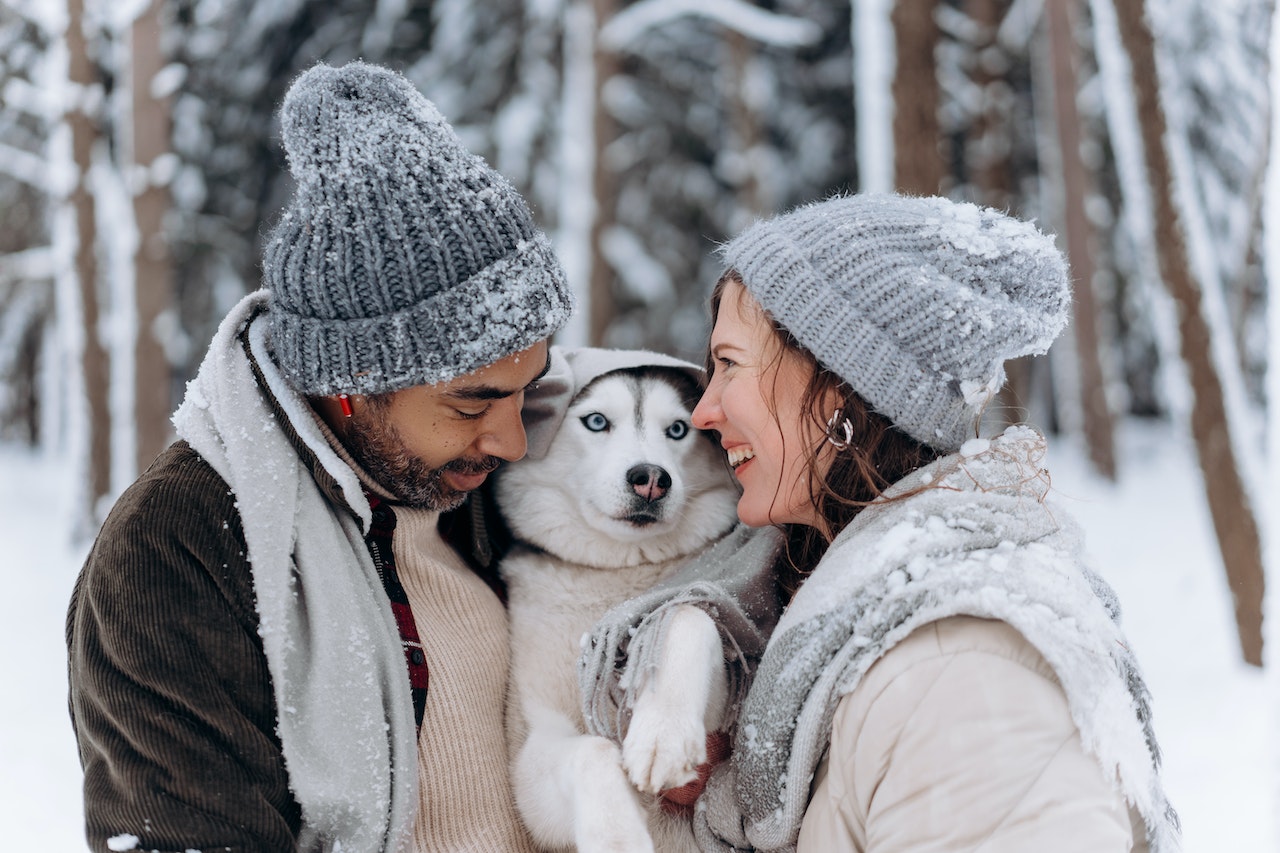When the first night frost throws frost over the grass, we put on a warm coat, gloves and a hat. Dogs can't do that. They protect themselves with a dense undercoat that covers the entire skin under the top coat like a fleece. Packed like this, they stay cozy and warm even in winter. But not all dogs have such a natural protection against the cold. In many cases the undercoat grows only sparsely or not at all.
Small dogs cool down much earlier than their larger counterparts. Older dogs often suffer from arthrosis, which becomes significantly worse in the cold. Such dogs cannot enjoy the walks outside because they are frozen through very quickly. They are also unable to warm up by running because their limbs are far too stiff to do so.

How do you know if your dog is cold?
When a dog gets cold, their skin contracts, causing their hair to stand up. The body shrinks as the poor guy tries to maintain his body heat. Many dogs alternately pull each leg up and continue as a three-legged walker. Eventually the body begins to tremble. Then it's high time to go home. Otherwise there is a risk of kidney and bladder infections, because the abdominal area is the least protected. Muscles and joints hurt and the dogs only move stiff-legged. Nobody wants that, which is why cold protection is necessary for all frostbite.
What does the ideal protection against the cold look like?
On dry, cold days, you can wear a fleece or velor coat. It warms reliably, but does not repel moisture.
On rainy or snowy days, the dog needs a warm, air-permeable but water-repellent coat . In the case of small dogs, the coat must above all cover the stomach, because they walk close to the ground, where it is always coldest. Dogs with joint problems must be dressed in such a way that their problem areas, i.e. elbows and knees, are covered. Frozen specimens get double protection: A body made of wool serves as an undergarment, the coat over it keeps you warm.
Very important : The dog's coat should enclose the body, but not constrict it. It must not pinch anywhere or chafe the skin. The clasps must be lined on the inside and must not have any sharp ends. A slit on the back is useful so that the leash can be pulled through from the collar.

QUICK CHECK - What you need to know when it's cold
+ Small dogs freeze more than large ones
+ Young animals do not yet have natural protection against the cold
+ Very old dogs are frozen through very quickly
+ Sick dogs have a weakened immune system
+ Make sure that your dog moves quickly
+ Never leave him waiting in the car or in front of a shop when it's cold









